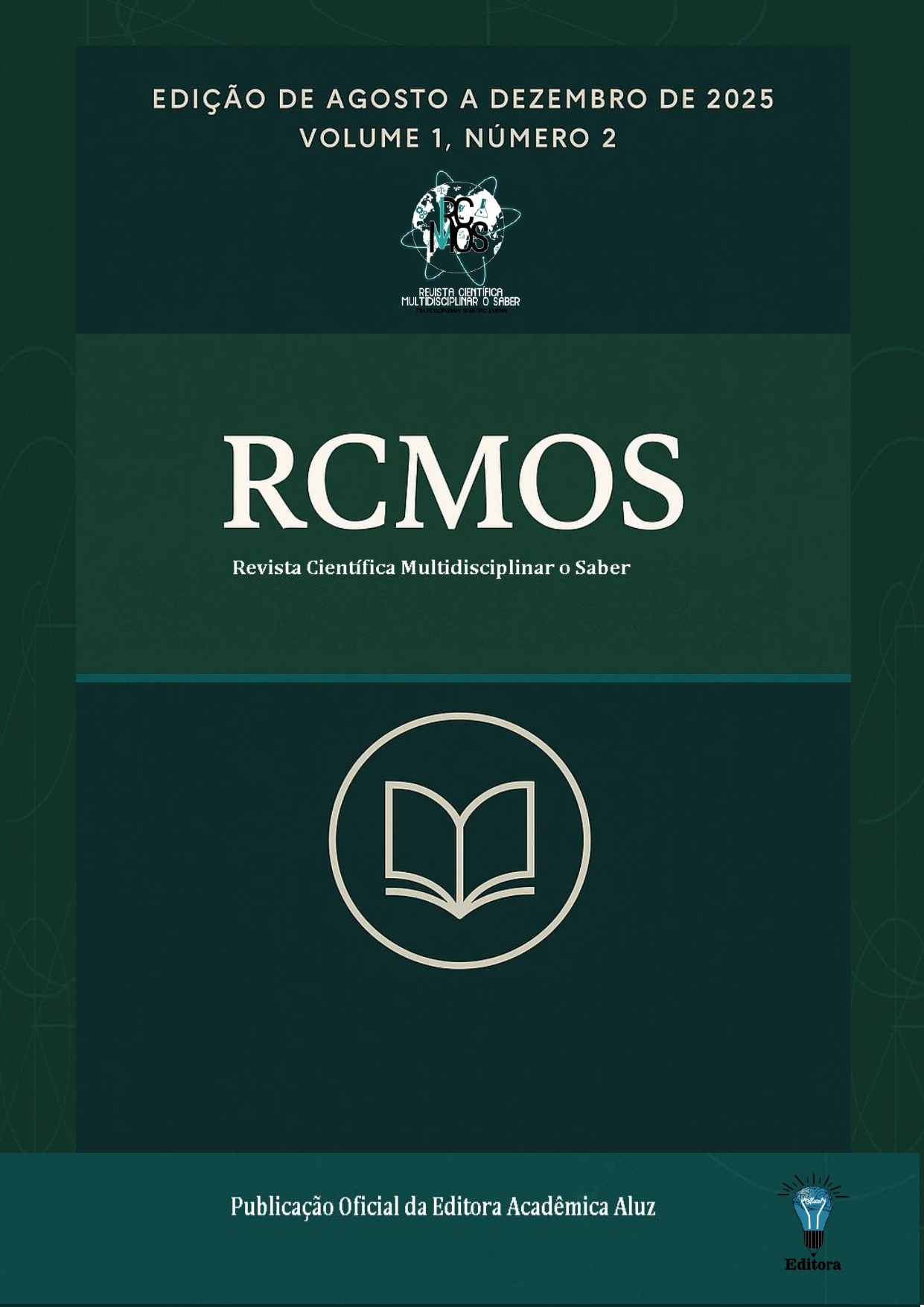Motivator and body reading as a primary factor in the training of substance detection dogs
DOI:
https://doi.org/10.51473/rcmos.v1i2.2025.1328Keywords:
motivation; body language; training; dogs; detectors; substances.Abstract
The main objective of this research is to investigate the correlation between motivation and body language in the training of detection dogs, aiming to ascertain the importance of an adequate understanding of these attributes in the dog's performance, as well as in its well-being and, consequently, lead to better operational results. The study is presented in the form of bibliographic, applied, exploratory and qualitative research, providing an examination of the effects that motivators and body language have on the performance of detection dogs. In addition, specific theories were used to demonstrate that stress in detecting dogs is a result of the combination of physical, emotional and psychological factors. Excessive training, lack of motivation, adverse conditions and inadequate teaching methods can cause stress, harming both the dogs' well-being and the efficiency of the training. These signals include licking the lips, looking away, yawning, stretching the body, and other body movements that indicate discomfort, insecurity, or frustration. If the dog trainer fails to notice these signals, the dog may become stressed or unmotivated, negatively impacting on its performance during training.
Downloads
References
BAZILIO, B. T. Adestramento e bem-estar de cães na medicina veterinária: revisão de literatura. 2022. 24f. Trabalho de Conclusão de Curso (Graduação) — Centro Universitário do Planalto Central Apparecido dos Santos, Faculdade de Medicina Veterinária, 2022.
BIGGS, A. B. P; DRUMMOND, S. Lazarus and folkman’s psychological stress and coping theory. In: The Handbook of Stress and Health. Chichester, UK: John Wiley & Sons, Ltd, 2017. p. 349–364. DOI: https://doi.org/10.1002/9781118993811.ch21
DANTAS, G. F. DE L.; MÜLLER, R.; ARAÚJO, M. P. Considerações básicas sobre a utilização de cães de faro. 2022. Artigo. Revista do Instituto Brasileiro de Segurança Pública (RIBSP)- ISSN 2595-2153, v. 5, n. 11, p. 160–187. DOI: https://doi.org/10.36776/ribsp.v5i11.125
FAZZI, M de S. Calming Signals Em Cães De Um abrigo na Cidade de Florianópolis-Sc. Brasil. 2016. Dissertação. Florianópolis, SC.
HARRIS, P. L.; OLTHOF, T. A concepção infantil da emoção. v. 1, n. 2, p. 136–162, 1982.
LAROSA, J. Psicología e educação: o significado do aprender. 2003.
LAURINO, F. Alterações hematológicas em cães e gatos sob estresse. 2009. [s.l: s.n.].
LOPES, K R F. Considerações sobre a importância do cão doméstico (Canis lupus familiaris) dentro da sociedade humana. 2018.
LORENZ, K. Os fundamentos da etologia. 1993.
MENESES, UTB. A cultura material no estudo das sociedades antigas. Revista de História, v.0, n. 115, p. 103, 7 dez. 1983. DOI: https://doi.org/10.11606/issn.2316-9141.v0i115p103-117
MICHELETTI, M. H.; MELO, C. B. DE. Cães de detecção: uma breve revisão sobre o uso do nariz canino. 2016. Revista Brasileira de Medicina Veterinária, v. 38, n. 4, p. 387–392.
PEIXOTO, A. et al. Comparação Entre As Teorias Da Aprendizagem De Skinner E Bandura. Caderno de Graduação- Ciências Biológicas e da Saúde- UNIT ALAGOAS, v.1, n.3, p.81–90, 2014.
PEREIRA, K. C. DE A. F. et al. Maus-tratos animal e as cinco liberdades: percepção e conhecimento da população de Pelotas/RS. Brazilian Journal of Development, v. 6, n. 2, p. 7503–7515, 2020. DOI: https://doi.org/10.34117/bjdv6n2-161
RUGAAS, Turid. On Talking Terms with Dogs: Calming Signal. 2. ed. Washington: Dogwise, 2006. 79 p. ISBN 1-929242-36-0
RUGAAS, Turid. Calming Signals- The Art of Survival. 2013.
RYAN, R. M.; DECI, E. L. Chapter 2- When rewards compete with nature: The undermining of intrinsic motivation and Self-Regulation. 2000. DOI: https://doi.org/10.1016/B978-012619070-0/50024-6
SAMPAIO, Angelo Augusto Silva. Skinner: Sobre Ciência e Comportamento Humano Skinner: On science and human behavior. Artigo 370. v. 25, n. 3, p. 370–383, 2005 DOI: https://doi.org/10.1590/S1414-98932005000300004
SELYE, H. Studien über vitaminpetente Nahrungsstoffe. Zeitschrift für die gesamte experimentelle Medizin, v. 74, n. 1, p. 320–323, dez. 1930. DOI: https://doi.org/10.1007/BF02624870
SILVA GUIMARÃES, D. P. et al. Relatório Final de Estágio Mestrado Integrado em Medicina Veterinária alterações de comportamento nos cães decorrentes da ansiedade dos tutores. 2017 [s.l.n.d..].
SKINNER, BF. Science and human behavior. New Work: MacMillan, 1953.
SKINNER, B. F. Ciência e comportamento humano. São Paulo: Martins Fontes, 1985.
WATSON, J. B. Psychology as the behaviorist views it. Psychological Review, v. 101, n. 2, p. 248–253, 1913. DOI: https://doi.org/10.1037//0033-295X.101.2.248
Downloads
Additional Files
Published
Issue
Section
Categories
License
Copyright (c) 2025 Jônatas Torres da Silva (Autor)

This work is licensed under a Creative Commons Attribution 4.0 International License.












